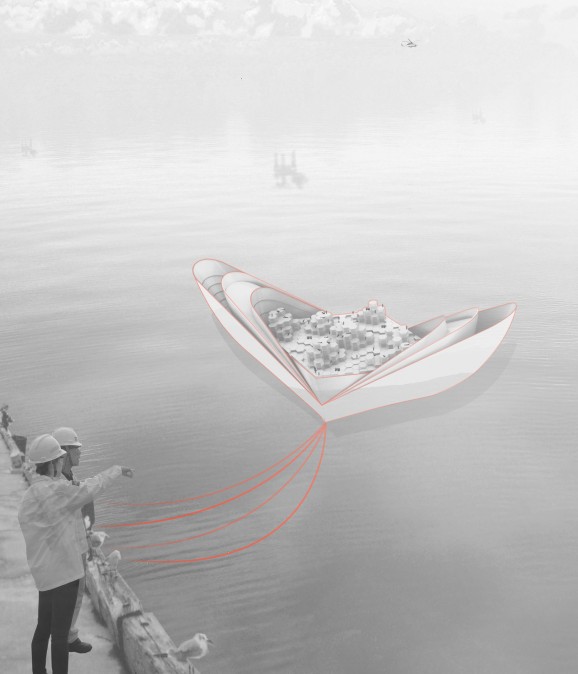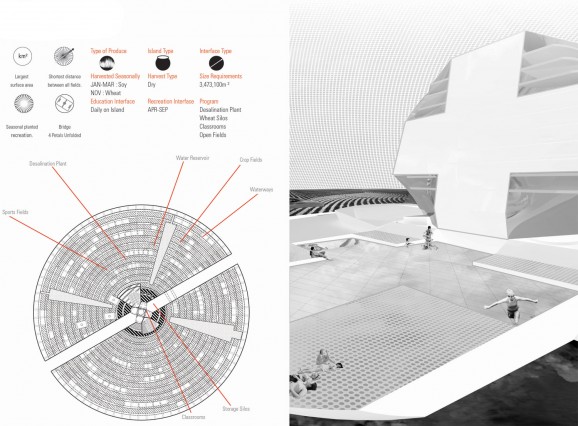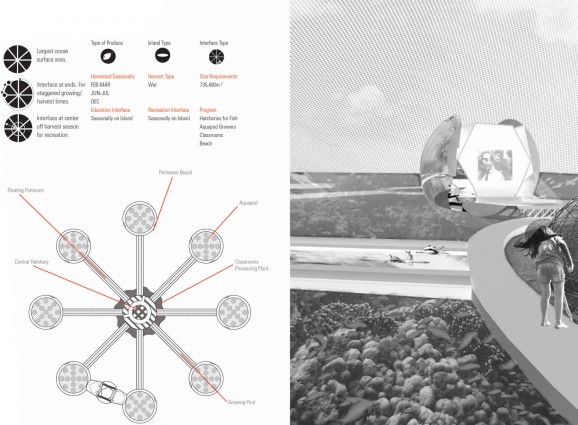Students Design Floating City For Oil Workers
This article is more than 2 years old
 Did you ever have to (or choose to) read Gulliver’s Travels? I remember slogging through it in school, and later, after I’d gained an appreciation for the book as proto-science fiction, forcing students to slog through it. I’ve since abandoned it as a text I use in class, but certain ideas still resonate. The Houyhnhnms, the race of horses more intelligent than the humans (Yahoos), were one of the first intelligent “alien” or non-human species ever imagined, and thus set the stage for smart aliens and robots. The other is Laputa, the floating island Gulliver visits. Since then, sci-fi has used the floating city concept more than a few times, and while the idea might seem outrageous, it may be yet another sci-fi invention that comes to fruition in real life, thanks to students at Rice University. [Okay, so it floats on the water rather than in the air, but one step at a time. – Ed.]
Did you ever have to (or choose to) read Gulliver’s Travels? I remember slogging through it in school, and later, after I’d gained an appreciation for the book as proto-science fiction, forcing students to slog through it. I’ve since abandoned it as a text I use in class, but certain ideas still resonate. The Houyhnhnms, the race of horses more intelligent than the humans (Yahoos), were one of the first intelligent “alien” or non-human species ever imagined, and thus set the stage for smart aliens and robots. The other is Laputa, the floating island Gulliver visits. Since then, sci-fi has used the floating city concept more than a few times, and while the idea might seem outrageous, it may be yet another sci-fi invention that comes to fruition in real life, thanks to students at Rice University. [Okay, so it floats on the water rather than in the air, but one step at a time. – Ed.]
Fourth-year architecture students took on a project inspired by Brazil’s oil industry, which revolves around off-shore oil platforms located almost 400 miles from the coast. The oil platforms there are difficult to access — almost too far for most helicopters, and expensive no matter what kind of transportation is used. Brazilian oil company Petrobras has been looking for a way to make that oil more accessible, particularly for its employees.

That’s where the Rice students come in. They designed a floating city comprised of man-made islands that could house up to 25,000 oil workers. Their design includes three large “hub” islands that would provide the bulk of the industrial, office, and residential centers, and 42 smaller islands that would contribute important amenities to the community, including crops and solar power. The hub islands would have apartments, schools, a hospital, and other opportunities for recreation and work, and workers could travel between islands via ferry. Some goods would have to be imported, but the floating city is designed to be largely self-sufficient.
The most impressive aspect of the design is that the islands are all man-made. All of the activities going on above the water in some ways don’t hold a candle to what has to go on below the water. The students have designed mountains of steel under the islands which can be raised and lowered using ballasts, which is how massive ships stay balanced on the water. But now, digital sensors can calibrate based on wave levels, helping to stabilize the islands.

Ideally, Petrobras wants to build these islands and make them operational within the next five years. It’s unclear whether they’ll use the entirety of the Rice students’ design or just borrow from it here and there, so we’ll have to wait and see. Either way, such a fine floating city would be worthy of Gulliver. And if you haven’t read the book, perhaps you should — after all, it comes highly recommended by Neil deGrasse Tyson.












